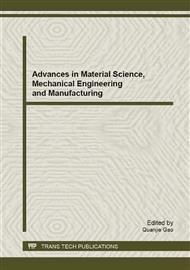p.388
p.392
p.396
p.400
p.403
p.407
p.412
p.417
p.422
Fluorinated MWCNT Used for Cathode of Primary Lithium Battery
Abstract:
Li/graphite fluoride (GF) cells are well known to have high energy density, good reliability, long shelf life, safety and wide operating temperature. However, the low electronic conductivity and discharge potential of Li/GF cells obviously limited its applications. In order to improve the energy performance of Li/GF cells, an efficient method is to increase the transportation ability of Li+ in cathode. The decreasing layers of graphite could increase the fluorinated surface between carbon and fluorinating agent, resulting in the emerge of the C-F bands of fluoride. Multi-walled carbon nanotube (MWCNT) can be considered as a curly materials of nature graphite sheets. This barrel structure shows much more C-F bands when they were fluorinated and turned into fluorinated MWCNT. And these emerged C-F bands are advantageous when they react with lithium ion during discharge. The results show that Li/FMWCNT cells possess higher discharge potential than Li/GF cells.
Info:
Periodical:
Pages:
403-406
Citation:
Online since:
August 2013
Authors:
Keywords:
Price:
Сopyright:
© 2013 Trans Tech Publications Ltd. All Rights Reserved
Share:
Citation:


